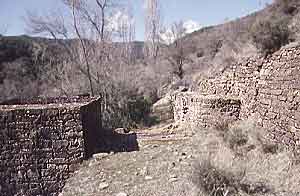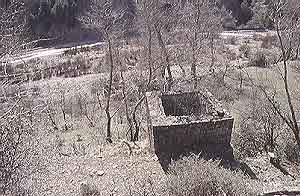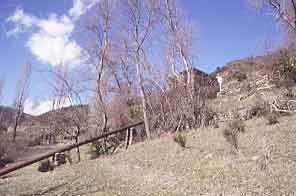
Acumuer

Pictures: iii.2000 and 20.iii.2002


Pictures: iii.2000 and 20.iii.2002

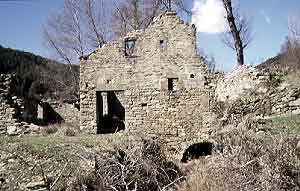
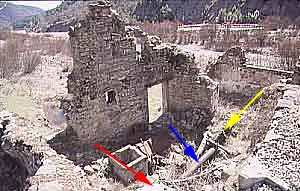
The façade bears an inscription - 1763 - above the entrance. The outlet is at the right side. Both cárcavos open in the same drain. They are very deep and reach the backwall of the mill. The cárcavo left is for the power generator.
Notice how both currents cross each other. The water for the flour mill comes from the right, from the balsa and flows to the left. The water for the generator comes from behind, goes to the turbine near the outer wall and then turns left to the drain.

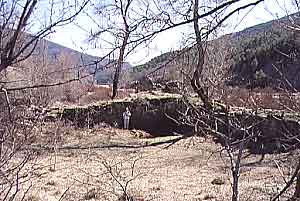
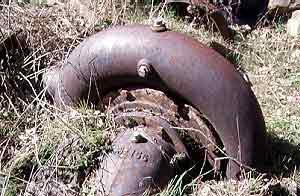
The waterworks of the power station are most impressive. It's a pitty nobody seems to care for it. The water is not taken from the river, but from a small tribute rivulet high on the right bank. A new maintenance road was built exactly through the capture point and only some diffuse traces survived.
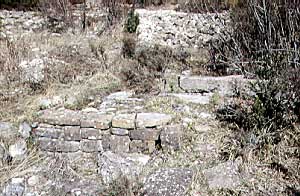
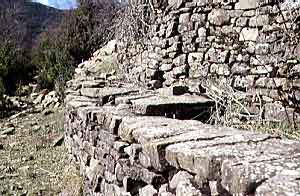

The channel continues for several hunderds of meters and then drops
below an old path (connecting village and pastures) to discharge into
an immense pressure pit (cubo).
A tube brings the water down to the turbine.
